Hello! Today we offer to talk on the subject of secure smartphones.
Our experience in this matter is very broad, and therefore we decided to start with this.
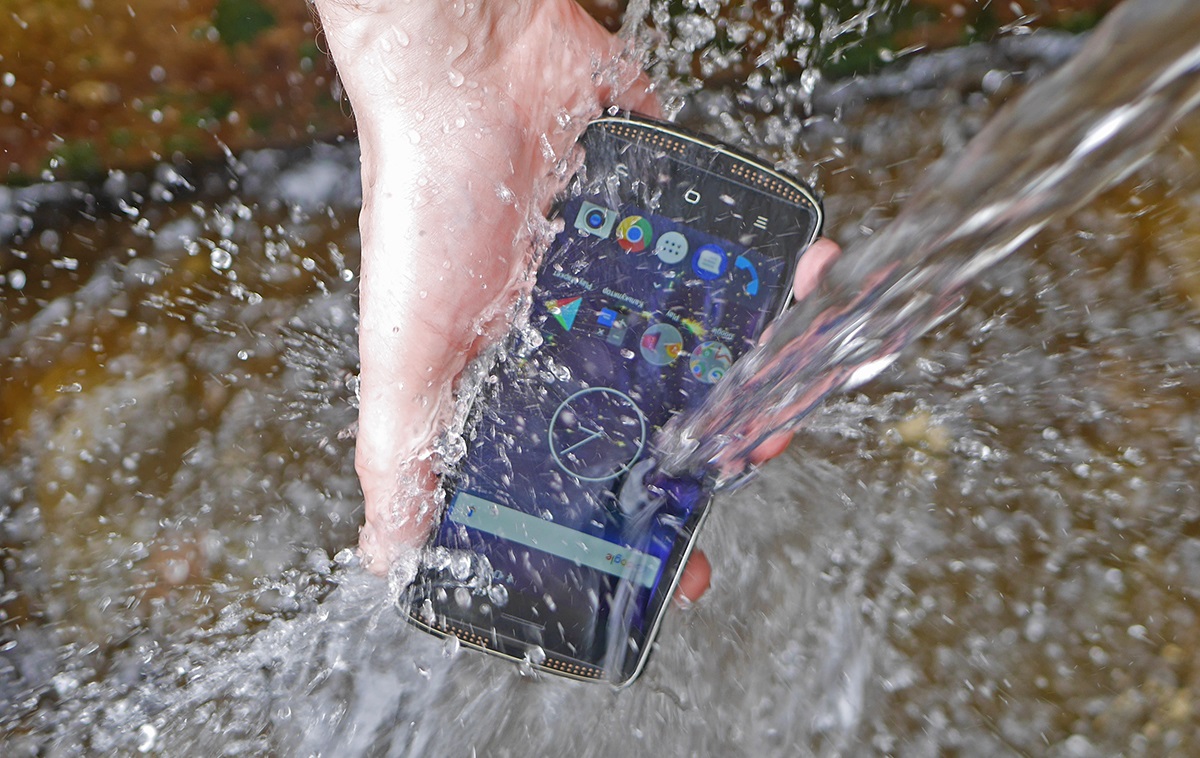
The topic is up-to-date and quite fashionable, and there are a lot of secure gadgets now. Manufacturers of smartphones, laptops, tablets and even e-books have realized that security can act as a competitive advantage, and in every way “push” it in advertising. However, the problem is that the consumer does not really understand the nuances. He understands “security” as an “absolute” and, having bought a device with a sticker “IP protection how many are there”, waits from the gadget total protection from everything.
There are also "assistants" of smartphone manufacturers - zealous businessmen who realized that the topic of security gadgets is very popular now. Every now and then manufacturers of “super-nano-drops” appear for 1,800 - 2,000 rubles, which are enough to process any device - and after that even a nuclear explosion will withstand it.
And the sale of these "miracle drops" for gadgets is accompanied by vague and completely distant from any physics documentation. Written in extremely small print (we'll talk about small print).

One way or another, the buyer expects that the purchased “protected” or smartphone or “smartphone protected by nano-drop” will withstand deep-sea diving, a test with a washing machine and a hammer blow. And then, faced with the harsh reality, very much surprised and grieved, like this boy.
Because, first, the protection is different. And secondly, many of the “protected” smartphones are not really those. The security sticker and its real security are two big differences.
There are a lot of such “philistine” checks of “protected” phones on the Web: and every time until the last second you guess - hit the hammer right on the screen, or is it not? Pure Tarantino and the quest with cutting a finger in the movie "Four Rooms".

To beat or beat - that is the question, the answer to which depends on the person’s understanding: what these letters and digits of the security code mean.
Protection standards
Encoding "IP-xx" (literally IP, Ingress Protection Rating, "International Protection" and / or "Protection against penetration") helps the user to estimate in advance the "survival" of gadgets: will your smartphone endure rain, hail and fall, and can forget it for a day in the well without serious consequences.
Two digits in the IP code show the gadget's resistance to a particular impact:- The first digit (0 - 6) indicates the degree of protection against the effects of "solid particles", ranging from parts of the body to microscopic particles. And the IP2X code, for example, means that the gadget is literally protected from fingers or similar objects. Read: the human finger inside the case does not fall, but something smaller can cause damage. Or, for example, the IP6X code means that the device is dust-proof, i.e. even fine dust will not penetrate into the case, this is guaranteed by the manufacturer.
- The second digit (0-9K) describes the security of the device to the effects of liquids, namely, fresh water. None of the commercial smartphones has been awarded the 9K code. The maximum in the current reality is the figure 8. It reads like this: a smartphone can be thrown to a depth of more than 1 meter, but the actual maximum depth and time for which the gadget can be loaded is determined by the manufacturer.
If in the code you see the “X” sign, do not be alarmed - this does not mean that there is no protection from the corresponding impact. This means that testing for this particular form of exposure has not been done.
If with the first digit of the code everything is pretty clear, then with the second - not so much. Because too much is determined by the manufacturer. In general, it is more difficult to work with a liquid: water can be salty, but not fresh - and the test results (and they are not carried out in salty water) can change. And water is generally a more mobile structure than dust: sometimes a single random drop is enough to disable the gadget. Again, testing a smartphone in a controlled lab environment is not the life situation with your personal smartphone. Therefore, brands warn users from all sorts of "suddenness" - this is how the leading Japanese manufacturer makes it in the instructions for the "waterproof" model with the “IP68” sticker:
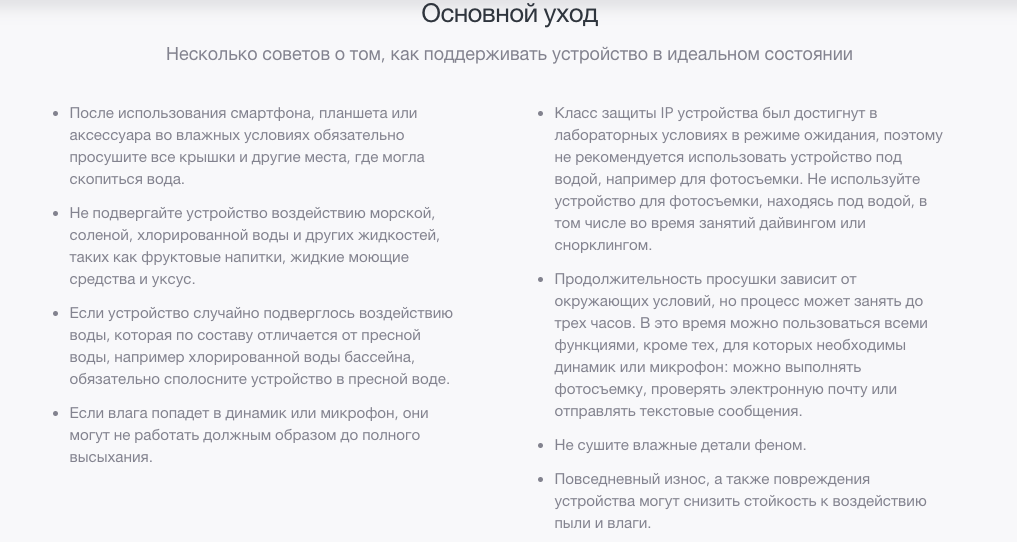 In short - translation: do not poke, do not put, do not take risks. And if you take a chance - rub for a long time, dry and hope for the best.
In short - translation: do not poke, do not put, do not take risks. And if you take a chance - rub for a long time, dry and hope for the best.It is clear that many manufacturers use the illegibility of ordinary people. And they promise protection under various IP standards, in fact, it is practically not providing it. And after some time, a user of an “IP67-protected” smartphone can learn from the review that his smartphone is generally not the one he claims to be. Such a story 5 years ago happened with the Cat B15 smartphone - during a blogger's “check”, it turned out that Cat smartphones were actually made on the basis of the Chinese
Haier Zing , on whose case an “extra” bumper was installed. It is clear that among the budget-protected smartphones, this practice of “substitution of both models and concepts” is not uncommon.
It is already clear that even the correct and honest testing will not tell how the gadget will behave after the phone falls into sea water, a chlorinated pool or a glass with sticky sweet cola. Therefore, IP encoding is only a guideline: you can only understand how your smartphone is protected from dust or clean water. And not from, for example, high temperatures. Here we need "extreme" tests and the corresponding codes.
This is exactly the so-called. military standards, and the designation already known to many consumers is MIL-STD-810G. Everything is much more complicated here, and the tests themselves for meeting the extreme standard are about 30 tests, some of which can not be conducted without military equipment. For example, the list includes tests in a saturated acid atmosphere or in the explosion zone. Therefore, manufacturers who claim the compliance of their smartphones with the MIL-STD-810G standard are likely to be cunning.
Separate tests can, the smartphone also passed, but it was hardly tested in the war zone. It is clear that it is not profitable for an honest producer (the majority of consumers will not understand the nuances of encodings) - therefore, the frankness of some is especially appealing. Here is a major Korean manufacturer, which released a middle-class smartphone with protection, indicated in the characteristics: "Complies with the MIL-STD-810G standard, but it passed 14 tests." Well, that is at least honest.

So, if your personal smartphone did not pass the tests for MIL-STD-810G, or you do not know for sure about this, then you shouldn’t definitely drop it into hot soup or go to the sauna with it.
We at Vertex do not declare for our “off-road” models of protection according to the MIL-STD-810G standard precisely for the reasons described above. At the same time, for example, Vertex Impress Tor and Impress Grip smartphones are impact resistant and calmly tolerate a fall from a height.
It is these characteristics that are meant by other manufacturers that declare MIL-STD-810G.
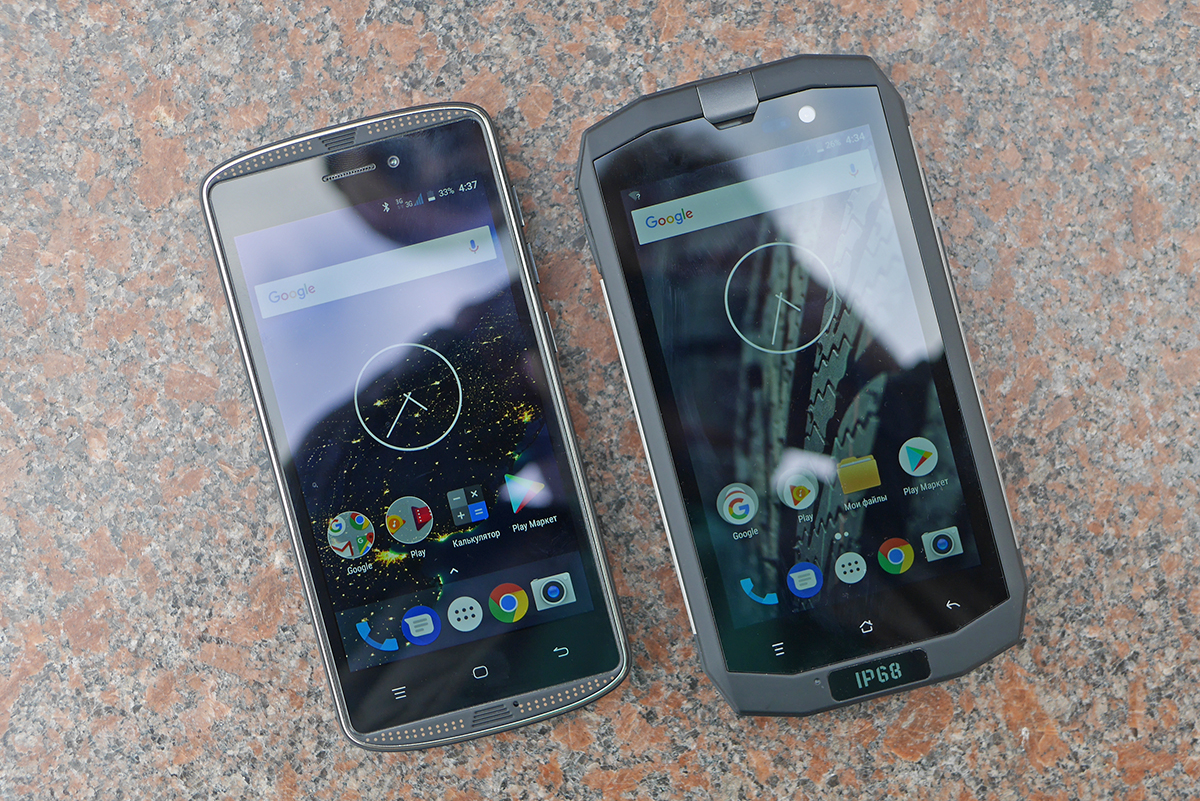 Vertex Impress Tor and Vertex Impress Grip, by the way, one of their first low-cost protected smartphones with Qualcomm chipsets - MediaTek solutions are in counterparts, which are often slower and provide less stable satellite navigation
Vertex Impress Tor and Vertex Impress Grip, by the way, one of their first low-cost protected smartphones with Qualcomm chipsets - MediaTek solutions are in counterparts, which are often slower and provide less stable satellite navigationLow temperatures (tested for immunity to them, included in the MIL-STD-810G) are not terrible to these two models: they work without problems after a night in the freezer. But we do not specify the extreme standard, because we really did not carry out all 30 tests. And we can’t promise the client a “restraint” of smartphones in a nuclear war or the fall of meteorites.
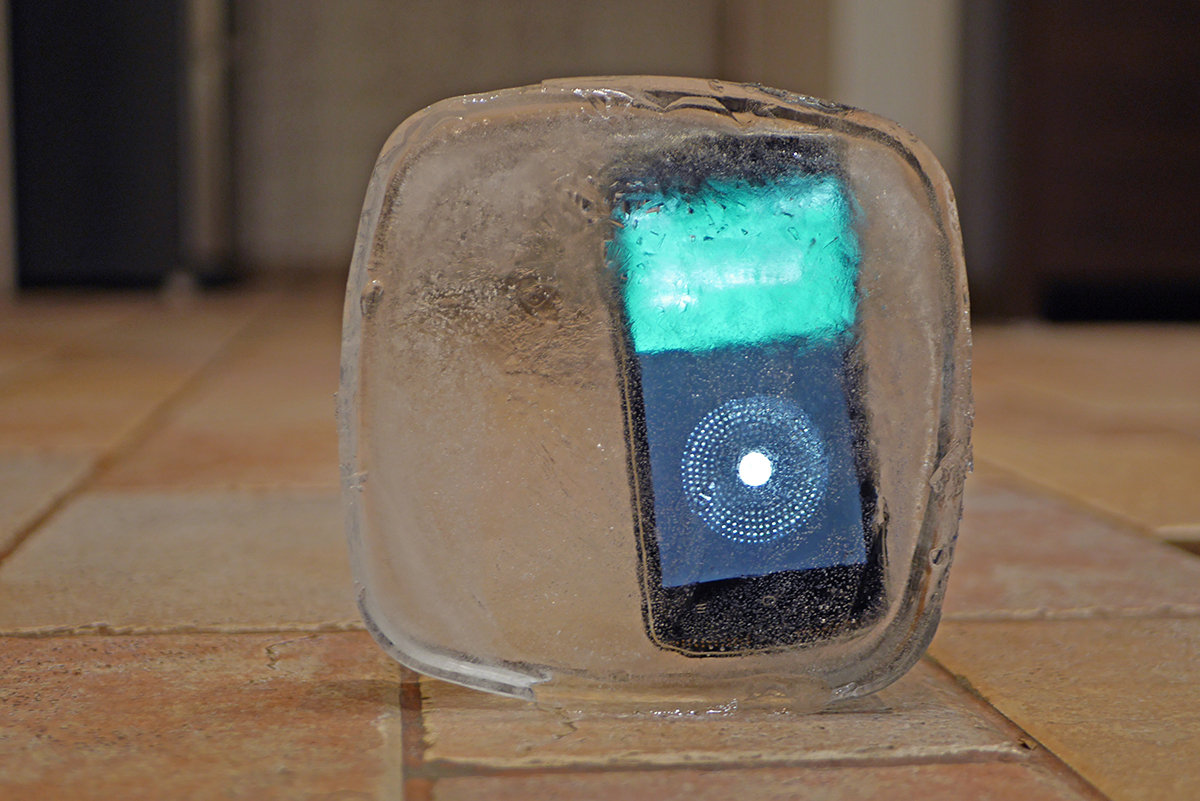 In the photo - Vertex Impress Tor, slept in the freezer.
In the photo - Vertex Impress Tor, slept in the freezer.Tops of protected smartphones and what could be wrong with it
The logic of the compilation of the “tops” is clear: there are a great many gadgets on the market, and for many consumers ready-made collections of smartphones with certain properties are the way to figure out and decide on personal “wants”. We believe that all protected smartphones from the top 10 or top 100 can be divided into two types:
1) Really cool, protected to the maximum smartphones of world brands.Everything is clear here: world brands can afford to combine a really cool protection practically “on all fronts”, modern software and fashionable design. Top-end protected smartphones include Samsung Galaxy S (starting with Galaxy S5), many Sony Xperia, Huawei Mate and P series, the latest iPhones. And yet, even the top models sometimes have flaws too. For example, the plastic cover of the same Galaxy S5, when used (noted by customers), was scratched, microcracks appeared on it, and because of this, the declared protection was reduced.
A well-known journalist Sergey Vilyanov
broke the screen of the LG G6 ,
protected from impacts , dropping it from a small height. At the same time, the main problem with such protected smartphones and all their amazing advantages is still in their cost and availability of spare parts on the Russian market. Whether the consumer is ready to pay an amount of 30-35 thousand rubles for non-guaranteed protection of a smartphone from falling from a great height or swimming in the salty sea is a big question.
2) Medium brands and Chinese, which are not always secure, but aggressive in “pushing”.Here is a huge field, almost completely clogged with “fresh and vigorous” Chinese brands. And BlackView, and HomTom, and a dozen more popular brands, whose smartphones are not afraid of water, fire, copper pipes and anything else. At the same time - appealing cheapness in comparison with the largest world brands. The growing popularity of these “new Chinese” is understandable: even a real geek needs not so much a “smart phone as strong as your bati's liver”, but a modern, fast smart phone with a completely worldly degree of protection.

The problem of many Chinese B-brands (and not only Chinese ones), as a rule, is still in a rather low quality of gadgets. Because often you have to choose: either a metal case or a super-reliable unbreakable plastic, or a good-quality “filling”. As a result, smart-looking smartphones often have old, “uncaptured” (constantly constantly lagging) software. Or, with decent functionality, the design is such that, in a decent society, a “protected” smartphone can be pulled from a pocket. But even consumers of inexpensive phones already want not only reliably and quickly, but also beautifully.
And there is another problem with Chinese B-brands. UNPREDICTABLE QUALITY of a complete set. Those. A particular buyer can get lucky - he will get a successful smartphone, where not only software quality and design, but also the assembly itself correspond to the one declared by the manufacturer. Or it may not be lucky - for example, the back of a phone “praised by bloggers” will fall off, or after “bathing” the phone in water, it suddenly turns out that its mounting bolts have rusted. Because directly when assembling one of the batches of smartphones, fasteners are allowed to be replaced with cheaper ones and, accordingly, fragile ones.

There are many similar stories on the Internet, and more often than not, their reason lies in, to put it mildly, the inadequate control over serial Chinese production. Those. it may not be a problem of software development, design and "bells and whistles" all honest. Everything is decent there! But the "performance on the ground" seriously pumped up - and the manufacturer, it turns out, did not conduct proper control over the serial release of their products.
You can say that it’s a sin to the Vertex brand, which also collects its smartphones in China, to offend hardworking rice-farming cooperatives. Yes, we collect our gadgets in China: but our quality control system is such that we force our “Chinese partners” to bring the quality of each smartphone to the stated one. Because we want for our customers the world, quickly and reliably working smartphones and cookies for change :)
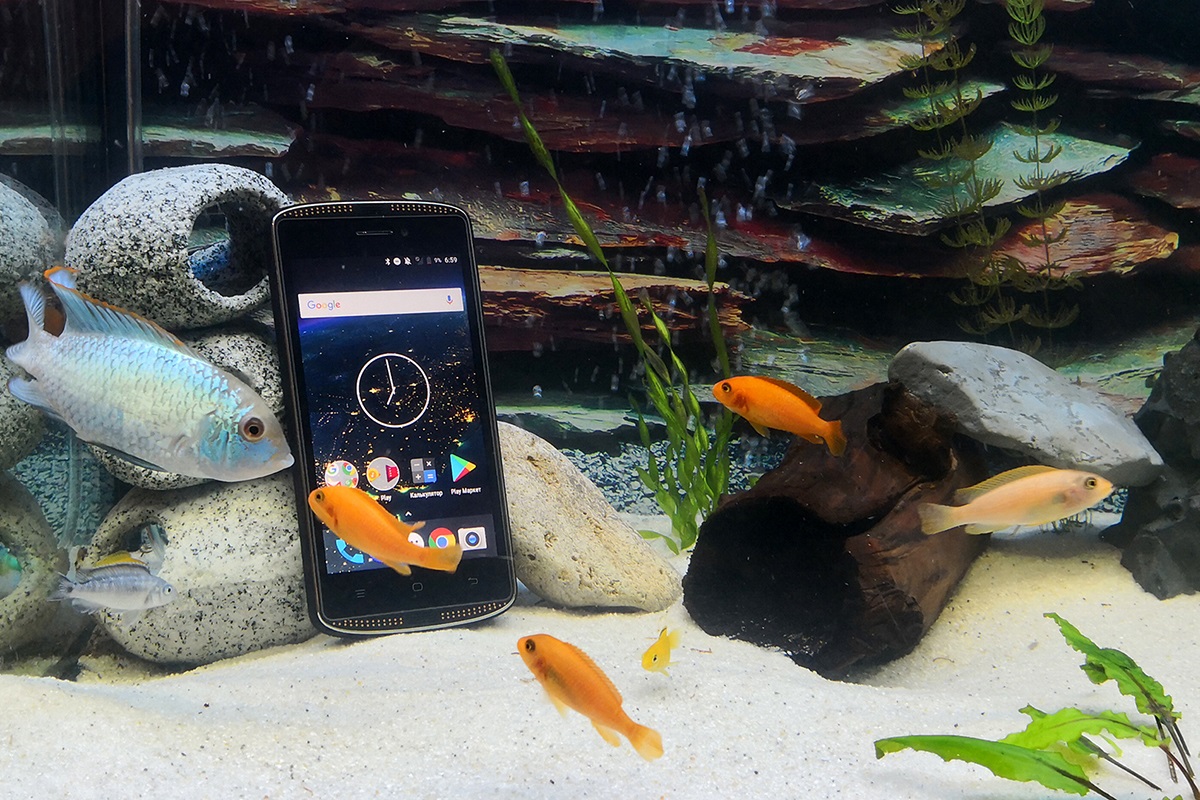
As output
If you are considering buying an “armored” gadget, consider the following:
- Before you understand the intricacies of specific brands and models, decide on the type of protection that you need. Only moisture protection? Or do you need both moisture protection and impact resistance? Or do you enjoy extreme sports and you need total, “military”, protection from everything that is possible?
- Examine the relevant standards (we briefly described them above, but you can find the most detailed descriptions at least in Wikipedia) and find the one that interests you. Consider smartphones that are labeled with the appropriate standard.
- Ask or find online documentation to help you understand: Does the manufacturer not exaggerate the characteristics of its gadget in terms of security? Did he really do all the necessary tests to use the cherished abbreviation "IP ..."? What instructions are there for this model - and, most importantly, what is written there in the smallest font? As we remember, the truth can be hidden in it.
- Pay attention to the reviews. Despite the fact that many consider them “purchased” and non-informative, according to reviews you can understand a few key things: what kind of “consumer” history does a particular model (or brand as a whole) have, what security bugs were detected by users, and what did the manufacturer do to them? . And did you? After all, it is important to understand whether the manufacturer “works out” the feedback and whether it improves or optimizes its gadgets?
- When making a decision, do not forget what we were talking about: even the most complex and multi-level tests cannot simulate absolutely all life situations. They can not plan a swim in a sticky "cola", diving in the most salty Dead Sea in the world, or immersion in boiling soup. “Life, Comrade Major, is ahead of the dream,” wrote the famous Leningrad writer Sergei. Therefore, an honest manufacturer indicates what he does not guarantee and is responsible only for the proven standard of security. Not very honest is silent or writes common phrases in small print. And to choose and use a smartphone - you. Therefore, choose carefully.
We expect that this publication will help the “newcomers” in matters of security, to better understand the principles and personal need to choose protected or ordinary smartphones. All questions are in the comments. We will be happy to answer them.